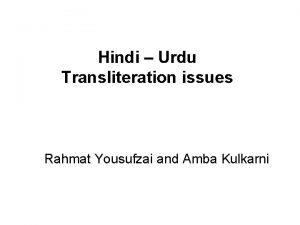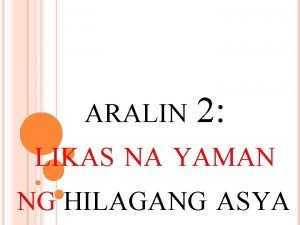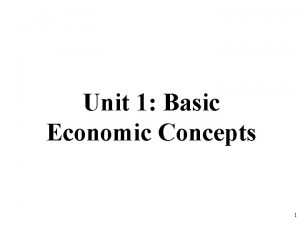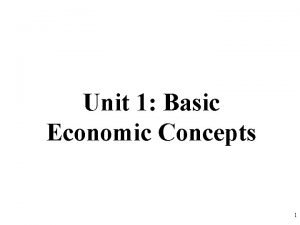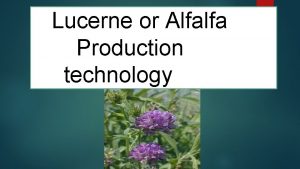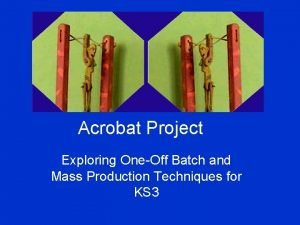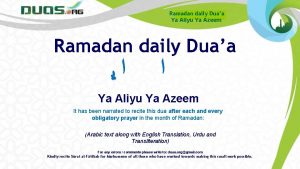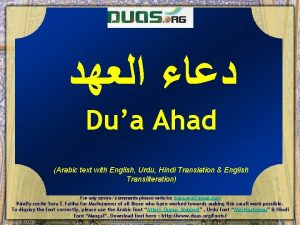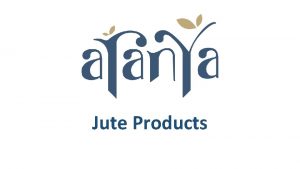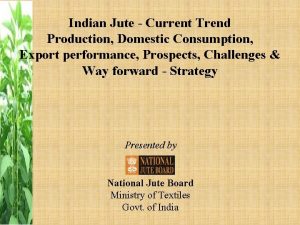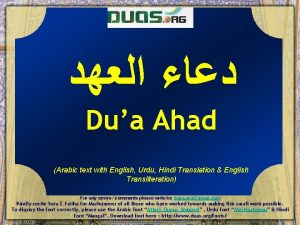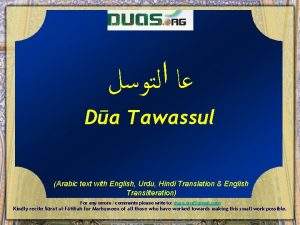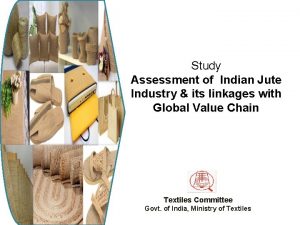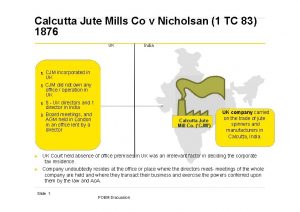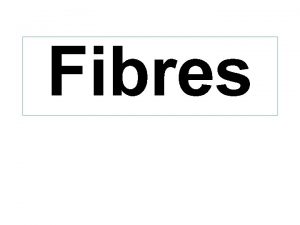Production technology of Jute English Name Jute Urdu






















- Slides: 22

Production technology of Jute

English Name: Jute Urdu Name: Pat Sunn Botanical Name: Corchorus olitorius & Corchorus capsularis

Introduction � Jute is one of the most important natural fibers after cotton in terms of cultivation and usage. � Jute is a long, soft, shiny vegetable fiber having genus Corchorus and family Malvaceae. � However, it has been reclassified within the family Sparrmanniaceae. � Jute fiber is composed primarily of cellulose and lignin. � The fibers are off-white to brown, and 1– 4 meter (3– 12 feet) long.

History of Jute Ancient period Jute: � For centuries, jute has been an integral part of culture of Bengal, in the entire southwest of Bangladesh and some portions of West Bengal. � During Mughal era in India, jute clothes were worn by the poor villagers. Earlier in West Bengal, ropes and twines used for different domestic household applications are made of white jute. Time period from 17 th century: � Jute trading started in India between 17 th to 20 th century with a team of delegation sent through East India Company by British Empire. During the same period, the Scotlanders were experimenting on whether jute fiber can be mechanically processed. 1830 is the year when the flax machines were used by Dundee spinners for spinning jute yarns. Since Dundee mill was the only supplier of jute, the use of flax machine led to increase in production and export of jute products in entire continent. Continue………

Types of Jute Ø White jute (Corchorus capsularis) Historical documents (including Ain-e-Akbari by Abul Fazal in 1590) state that the poor villagers of India used to wear clothes made of jute. Simple handlooms and hand spinning wheels were used by the weavers, who used to spin cotton yarns as well. History also states that Indians, especially Bengalis, used ropes and twines made of white jute from ancient times for household and other uses. Ø Tossa ü jute (Corchorus olitorius) Tossa jute (Corchorus olitorius) is a variety thought to be native to India, which is also the world's top producer. It is used as an herb among Middle Eastern and African countries, who use the leaves that are used as an ingredient in a mucilaginous potherb called "molokhiya”. It is very popular in some Arab countries such as Egypt, Jordan, and Syria as a soup-based dish, sometimes with meat over rice or lentils. Continue…

Production of Jute � Jute is a rain-fed crop with little need for fertilizer or pesticides. � The production is concentrated in India and some in Bangladesh, mainly Bengal. � The jute fiber comes from the stem and ribbon (outer skin) of the jute plant. In the stripping process, nonfibrous matter is scraped off, then the workers dig in and grab the fibers from within the jute stem. � India, Pakistan, China are the large buyers of local jute while Britain, Spain, Ivory Coast, Germany and Brazil also import raw jute from Bangladesh. � India is the world's largest jute growing country.

Basic Requirements for Jute � Jute is a rain-fed crop with little need for fertilizer or pesticides. � Jute needs a plain alluvial soil and standing water. � The suitable climate for growing jute (warm and wet climate) is offered by the monsoon climate during the monsoon season. � Temperatures from 20˚C to 40˚C and relative humidity of 70%– 80% are favorable for successful cultivation. � Jute requires 5– 8 cm of rainfall weekly and more during the sowing period.

Selection of soil: � Clay loam or the sandy loam soil is most favorable for growing jute. Too much of rain and water logging can harm jute plants. The gray colored alluvial soil consisting salt formed by annual flood is best for jute plantation. � Alluvial sandy loam, clay loamy soils are best suited for jute production. � Capsularis jute can grow even in standing water especially towards the latter part of its growth. � Olitorius jute will not thrive in standing water. The latter is more drought resistant and is therefore grown on lighter soils

�Time of sowing: In high and mid lands, with the first rain shower in March or April the jute sowing season starts and continues till June in some western belt. �Seed bed preparation: Jute can be grown on all types of soils. Four to five cultivation followed by planking is given to prepare the seedbed. Fine tilth is required since the seeds are very small.

Manures and fertilizer application: � Five tonnes of well decomposed farm yard manure is to be applied during last ploughing. � Besides 20 kg per ha each of N, P 2 O 5 and K 2 O are to be applied basally. � Beds and channels are formed depending on water resources.

Top dressing of fertilizers � Apply 10 kg of N at 20 - 25 days after first weeding and then again on 35 - 40 days after second weeding as top dressing. � During periods of drought and fertilizer shortage, spray 8 kg of urea as 2 per cent urea solution (20 g urea in one liter of water) on jute foliage on 40 - 45 as well as 70 - 75 DAS.

Seed rate and sowing: Seeds can be sown either by broadcasting or by line sowing. Seed rate (kg/ha) Line Sowing Broad Casting Spacing (cm) No of plants m-2 Olitorius 5 7 25 x 5 80 Capsularis 7 10 30 x 5 67 Jute type Varieties: Capsularis JRC 212, JRC 321, JRC 7447 Olitorius JRO 524, JRO 878, JRO 835

Weed management: weeding twice on 20 - 25 DAS and 35 - 40 DAS. � Fluchloralin can be sprayed at 3 days after sowing at the rate of 1. 5 kg per hectare and is followed by irrigation. � Further one hand weeding can be taken up at 30 - 35 DAS. � Irrigation: Jute crop requires 500 mm of water. First irrigation is to be given after sowing and life irrigation on fourth day after sowing. Afterwards irrigation can be given once in 15 days depending upon the prevailing environmental conditions.

Harvesting of jute: � Jute crop can be harvested from 100 to 110 DAS but can be extended from 120 - 135 DAS depending on local cropping systems. � Jute plants are left in the field for 3 - 4 days for leaf shedding. � Then thick and thin plants are sorted out and bundled in convenient size. Yield: � Green plant weight yield is 45 to 50 tonnes per hectare � Fiber yield is 2. 0 to 2. 5 tonnes per hectare.

Extraction of jute fiber/ Retting Accumulation of jute � The skin or the bast can be taken out within 120 to 150 days after the flowers have been shed. � Early harvesting yields a healthy jute fiber. After harvesting, the plants are collected and is left for 2 -3 days for shedding the leaves. � Then the stem has to be bundled for steeping in water. The steeping process has to be done right after harvesting.


Retting The jute fiber has to be extracted from beneath the bark which covers the central part of the stem. The different steps in the extraction process are given below; � Collection: First, the jute plants are collected and bundled. � Steeping: After the fiber is been loosened from the stalk, the bundles are steeped in water which is 60 to 100 cm in depth. In 8 to 30 days the barks are easily separated from the stalk. � Stripping: Now the fibers can be removed from the stalk by washing them in deep water or by stripping with hand in water.

� Washing: The extracted fibers are washed in clean water. If the fibers have dark color, this color can be removed by dipping fibers in tamarind water for 15 to 20 minutes. � Squeezing and drying: After squeezing extra water from the fibers, they are hung on bamboo railing for sun drying for 2 to 3 days. � Bailing: The jute fibers are then graded into tops and middles as B, C and X bottoms. � Kutcha packing : The fibers are then packed into kutcha bales, weighing approx 250 pounds, widely used in the home trade. � Storage or transport : Finally they are ready for transportation to jute mills or market.

Basic Jute products � Canvas: It is the finest jute item, woven with highly premium grades of fiber. Jute canvas and screen lamination along with paper polythene is widely used in mines and for getting protection against weather. � Sacking Cloth: Made up of low quality jute fibers, sacking cloth is loosely woven heavy cloth used for packing sugar, food grains, cement etc. Weighing from 15 to 20 ozs, several qualities are available in this category like Twill, hy Cees, D. W Flocer, Cement Bags and many more.

� Hessian Cloth: It is a plain woven superior quality jute fabric, weighing between 5 and 12 ozs, a yard. Hessian cloth is highly exported all across the world in the form of cloth, bags etc. Also known as burlap, this cloth is vastly used in wide ambit of applications. � D. W. Tarpaulin: This product is majorly used for coverings on a very high multidimensional scale. � Geotextile: It is a jute cloth laid along the river embankment sides and hill slopes to prevent soil erosion and landslides.

� Bags: Used mainly for shopping, bags are usually fabricated from sacking or hessian cloths. They are often decorated with varied artistic designs and with straps, chains and handles in several dimensions and shapes. Other category of bags are promotional bags which are manufactured to promote items for sale. � Hydrocarbon free jute cloth: This cloth is fabricated by treating jute with vegetable oil. It is a hessian fabric, hydrocarbon free cloth, widely used for packing different food materials, cocoa, coffee, peanut beans etc. � Continue …. .

� Serim Cloth: It is a light weight hessian cloth, used in felt industry for reinforcing the non woven fabric and for strengthening paper with lamination. � Tobacco sheets: Used for wrapping tobacco leaves, tobacco sheets are made up of hessian cloth. � Decorative items: The vast variety of decorative products are made up of jute fabrics like wall hangings, toys, table lamps, paper, decorative bags, furniture and many more. � Hessian tapes and gaps: They are made up with hessian cloth, woven with gaps at regular intervals and the cloths cut between the gaps to make small width taps.
 Jute plant meaning in urdu
Jute plant meaning in urdu Urdu transliteration
Urdu transliteration Alur proses produksi
Alur proses produksi Alvisha name meaning in urdu
Alvisha name meaning in urdu Language translator english to urdu
Language translator english to urdu Present continuous tense urdu to english translation
Present continuous tense urdu to english translation Name three lines
Name three lines Ano ang likas na yaman ng kyrgyzstan
Ano ang likas na yaman ng kyrgyzstan Unit 2 demand supply and consumer choice
Unit 2 demand supply and consumer choice S&d analysis practice
S&d analysis practice Econmovies episode 5 worksheet answers
Econmovies episode 5 worksheet answers Maize production technology
Maize production technology Cylindrical grinding machine
Cylindrical grinding machine Scientific name of lucerne
Scientific name of lucerne Mass production technology
Mass production technology Partition of bengal
Partition of bengal Advaita vedanta definition
Advaita vedanta definition Ya aliyu
Ya aliyu Lahore resolution 1940 notes in urdu
Lahore resolution 1940 notes in urdu Is allah not sufficient for his servant meaning in urdu
Is allah not sufficient for his servant meaning in urdu Drawing and disbursing officer powers
Drawing and disbursing officer powers Dua e ahad pdf with urdu translation
Dua e ahad pdf with urdu translation Sexi essay
Sexi essay

